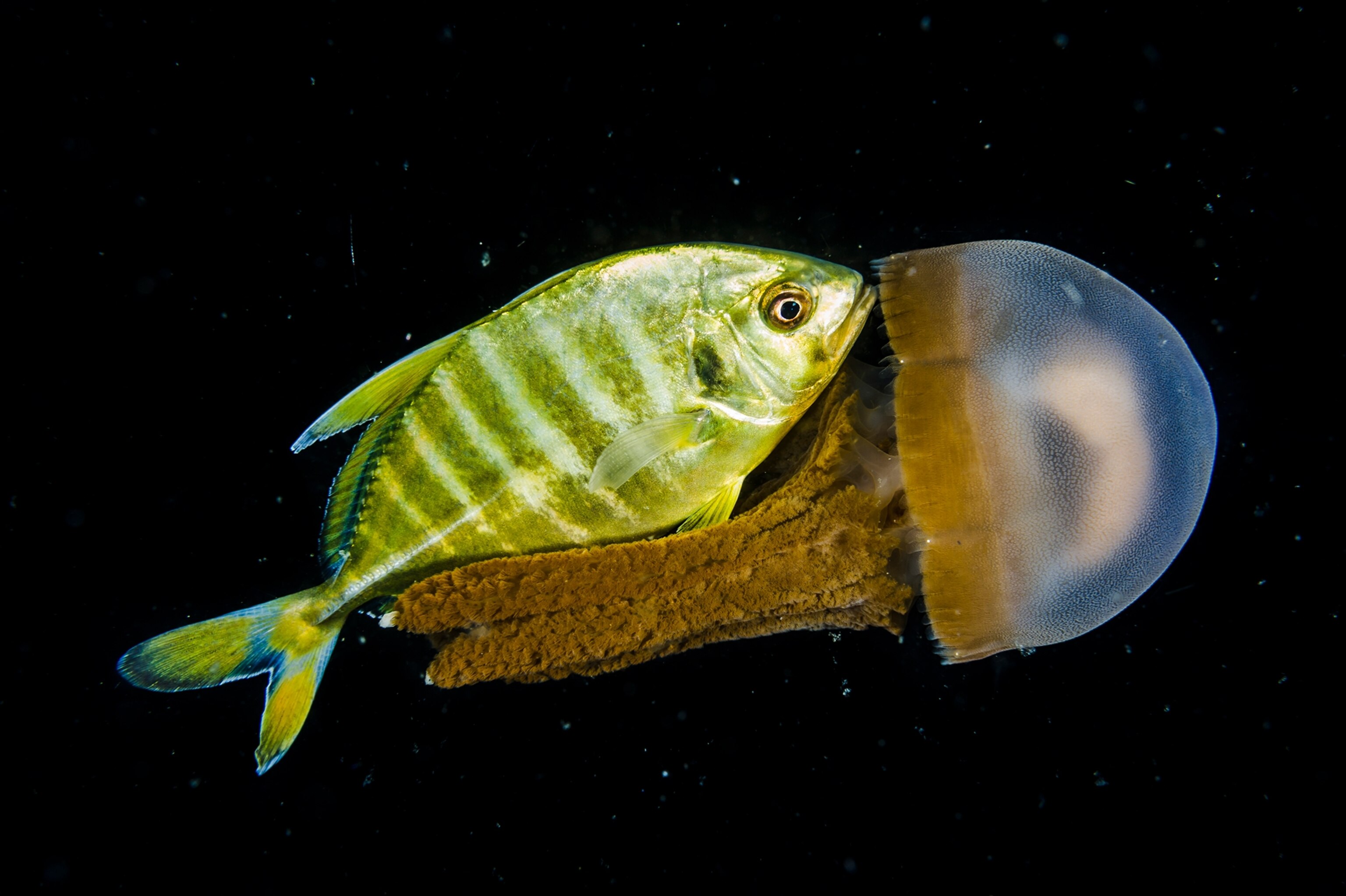
How do you photograph sea creatures from the deep?
By Whitney Johnson, Director of Visual and Immersive Experiences
When night falls upon the open ocean, rarely photographed creatures from the depths surface to feed. That rare glimpse is what attracted veteran marine photographers David Doubilet and Jennifer Hayes, who are so unflappable we once featured them after a crocodile approached—and they kept filming.
While working underwater at night—it’s called blackwater diving—the pair discovered a menagerie beyond imagination. The work, they said, was like drifting through space. “The only way to know which way is up is to watch which direction the bubbles are going,” Doubilet tells us. Above, a trevally joins up with a perfectly sized jellyfish as a defense against predators off Moalbaol, Philippines.
We’re featuring a few images of their extraordinary work here, and I encourage you to see their full story, with text by Nat Geo’s Amy McKeever.
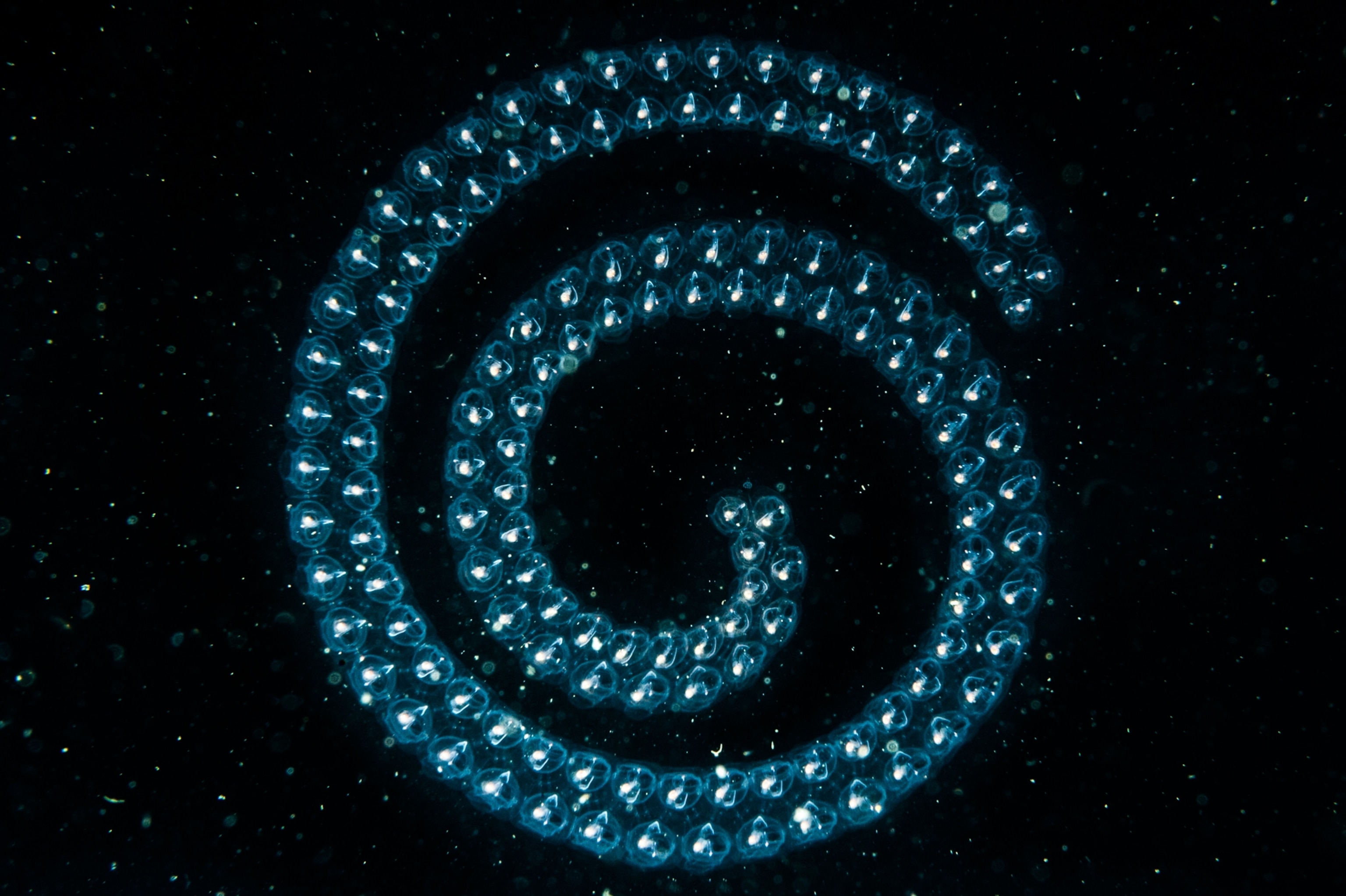
Power in numbers: Doubilet and Hayes use macro lenses to capture tiny organisms like salps (above)—gelatinous invertebrates that vary from the size of a thumbnail to a hundred feet long. Salps can link up in luminescent chains, using electrical signals to synchronize their movements. “They twist and form these amazing geometric patterns—and then change in front of you,” Hayes says.
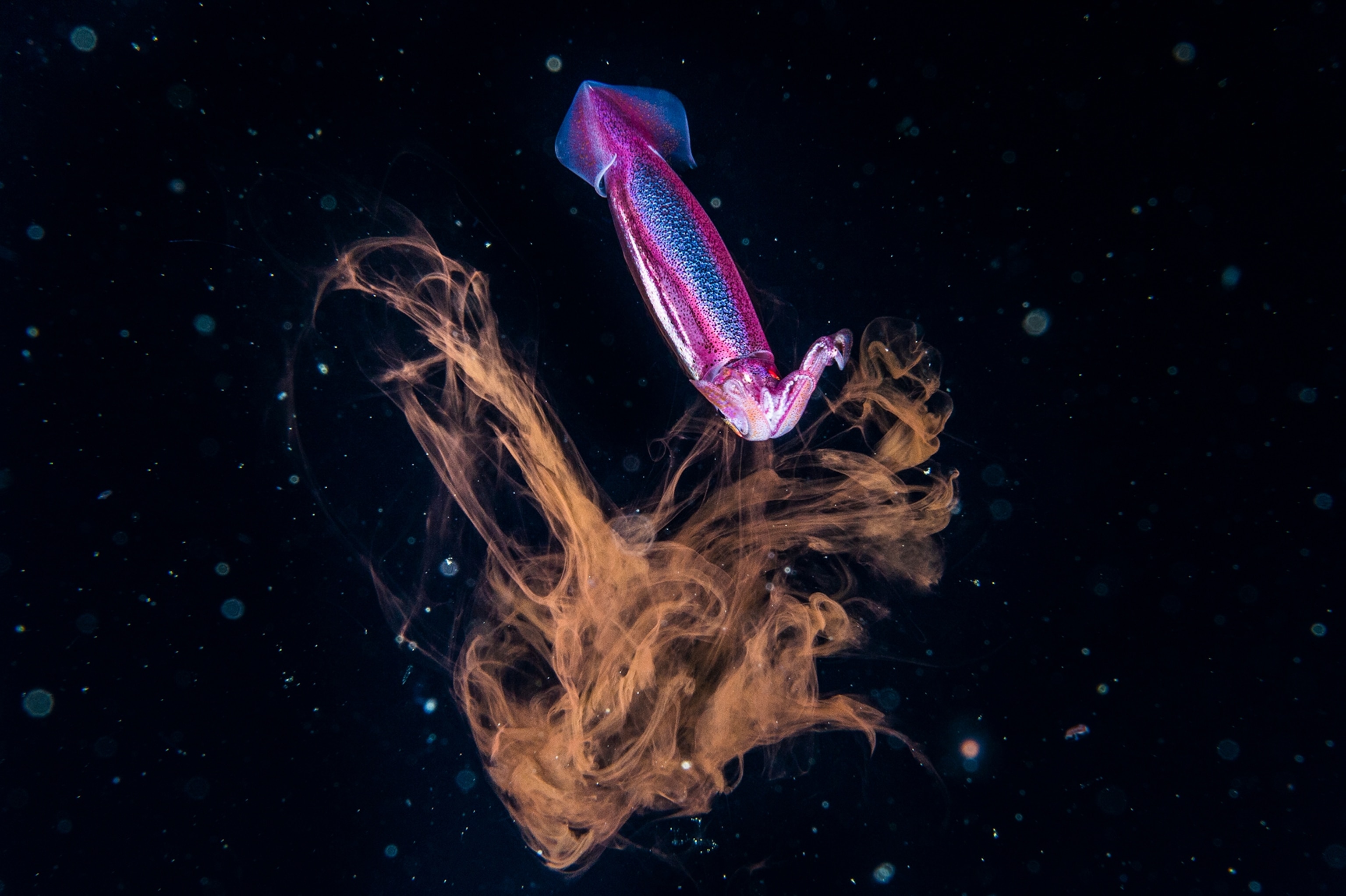
Masking an exit: A pelagic squid releases a cloud of ink before vanishing into the depths of Raja Ampat, Indonesia. While mesmerizing, Doubilet says the night sea can be frustrating to photograph because many of the animals are either incredibly small or flee at the sight of a human. “As you move the focus, the creature spins out this way or spins out this way and you might not get it."
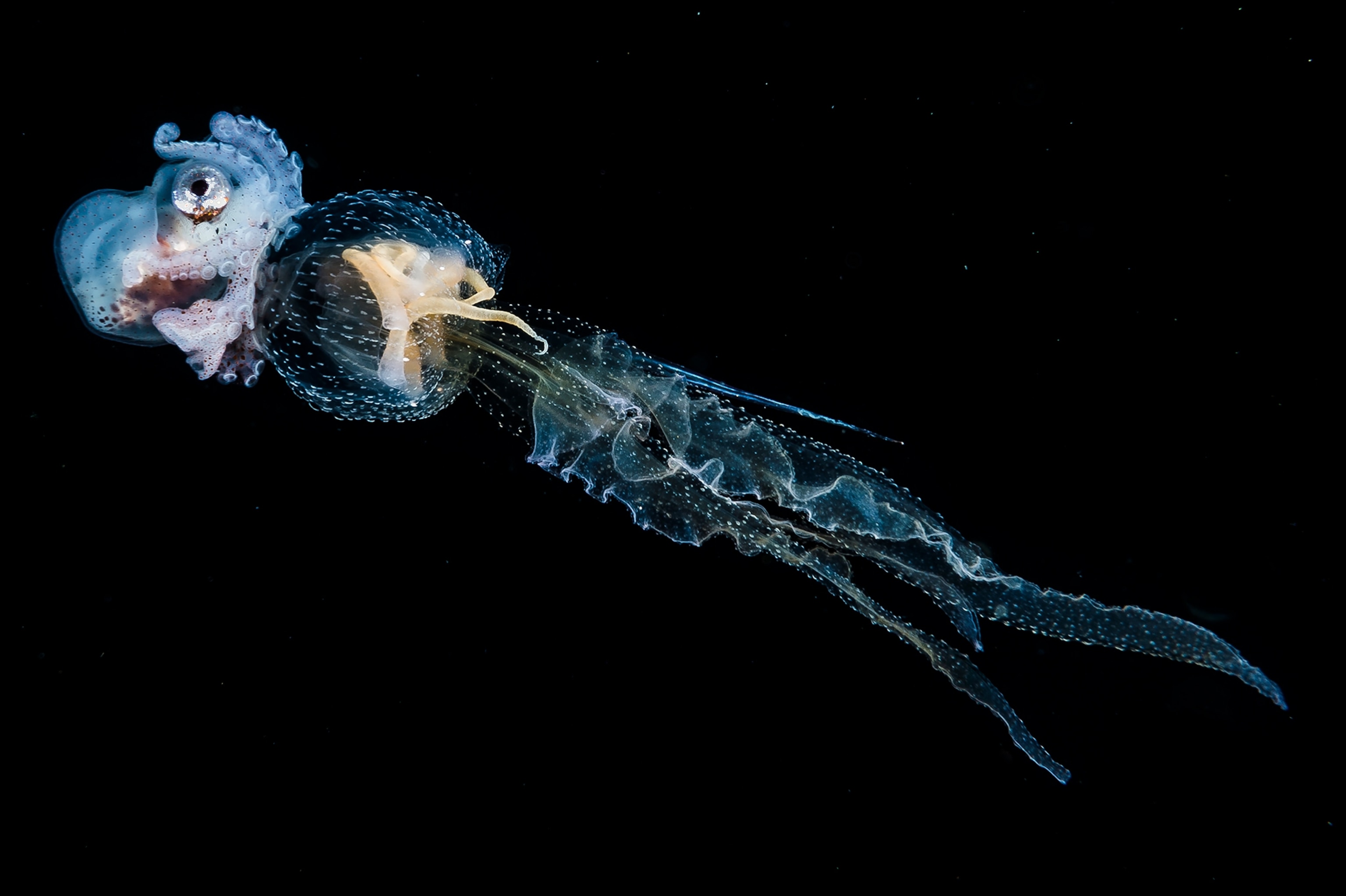
Rideshare: A male palogic octopus, also known as a paper nautilus, catches a ride from a jellyfish in Anilao, Philippines. “You rarely run into something that doesn’t fascinate you,” Hayes says. “It really is a new macroscopic lens into the sea.”
Do you get this newsletter daily? If not, sign up here or forward to a friend.
Today in a minute
Documenting now: For a number of young Black photographers, this is a moment they cannot ignore. “I definitely feel responsible and obligated to contribute to the narrative, given the toolset I have,” says Boston-based photographer Harry Scales, who has covered 10 or 11 demonstrations since police in Minneapolis killed George Floyd. Scales’ loved ones remind him to eat on days when he’s shooting protests, the Boston Globe reports. “It’s the most beautiful grind I’ve ever been a part of,” he says.
R.I.P. Margaret Morton: She scrambled through open manholes. Shinnied under fences. All to show America the lives of people many preferred to forget. She also documented how those people sought, too, to make themselves at home, even without one. For nearly two decades, Morton, a Cooper Union professor who died on June 27, chronicled communities on the edge of society in elegant photographs that drew comparisons to the work of social reformer Jacob Riis, the New York Times reports.
Where human rights are threatened: Photographers Newsha Tavakolian and Robin Hammond are among those featured in an exhibition entitled Carmignac Photojournalism Award: 10 Years of Reportage. The 170 photographs focus on human rights and environmental issues and, organizers say, are “a tribute to the courage and independence of the photojournalists.” Here’s more on the exhibition, and we’ll have more on Newsha Tavakolian later in this newsletter.
Your Instagram of the day
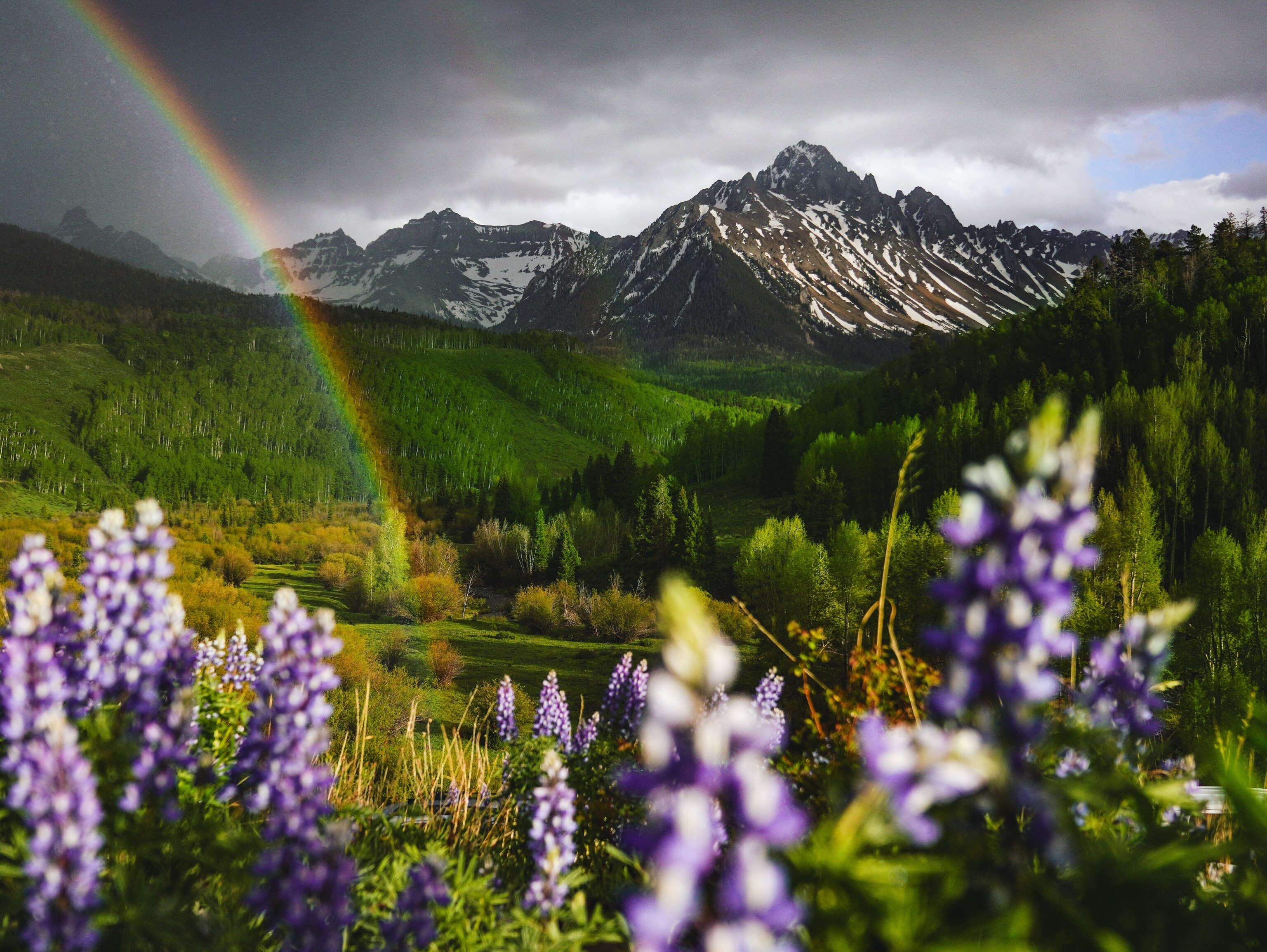
Wait for it: Not every day in isolation turns into rainbows and unicorns, says photographer Renan Ozturk. “Honestly yesterday was a hard one for me: feeling locked into an overwhelming cycle of video calls and digital mayhem, doing my best to be productive, until a full mid-afternoon meltdown. Anxiety took over, and I had to bail from a podcast in which I was supposed to give perfect kernels of wisdom to the adventure photography audience,” he tells us. “I just didn’t have it in me. Ended up going for a walk in a storm, and was gifted this bit of light at the end of a dark day.”
Photos: 16 breathtaking Rocky Mountain adventures
Are you among our 140 million Instagram followers? (Why not follow us now?)
Overheard at Nat Geo
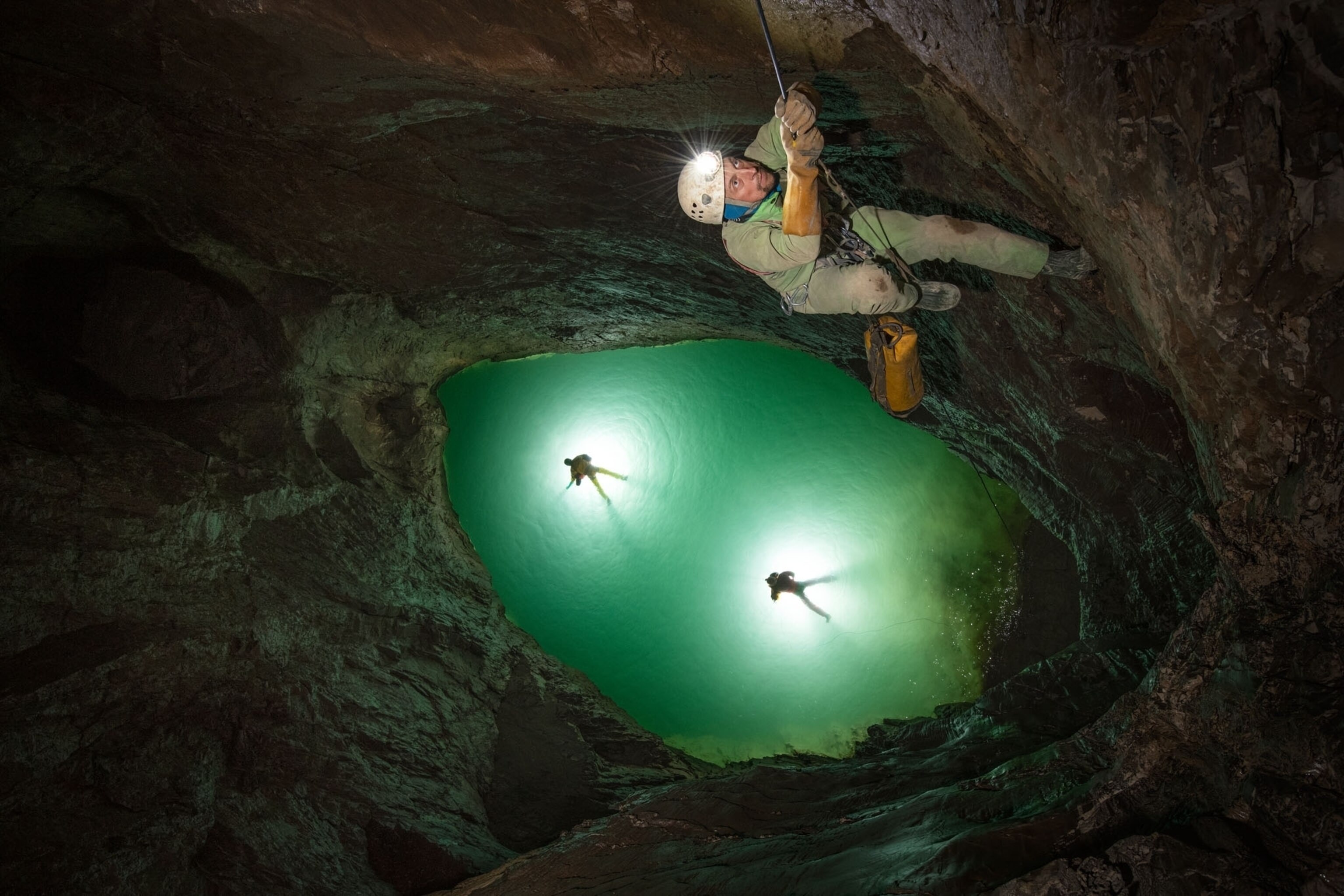
The flood: Photographer Robbie Shone and an expedition team had been 11 days underground, in the deepest known cave on Earth. Then they got the call. A pulse of water was coming. Water came from above—and, ominously, rose from below. The team slipped on waterproof gear and climbing equipment. Shone ditched all his other gear, except for photo memory cards, which he placed into a Ziploc bag and put it in his chest pocket. It took them four days to climb 6,890 feet to get out of there. Pictured above, expedition leader Pavel Demidov, pre-flood, climbs away the terminal stump, the pool that marks the deepest point in the cave.
Subscriber exclusive: Climbing for my life, from the world’s deepest cave
The big takeaway
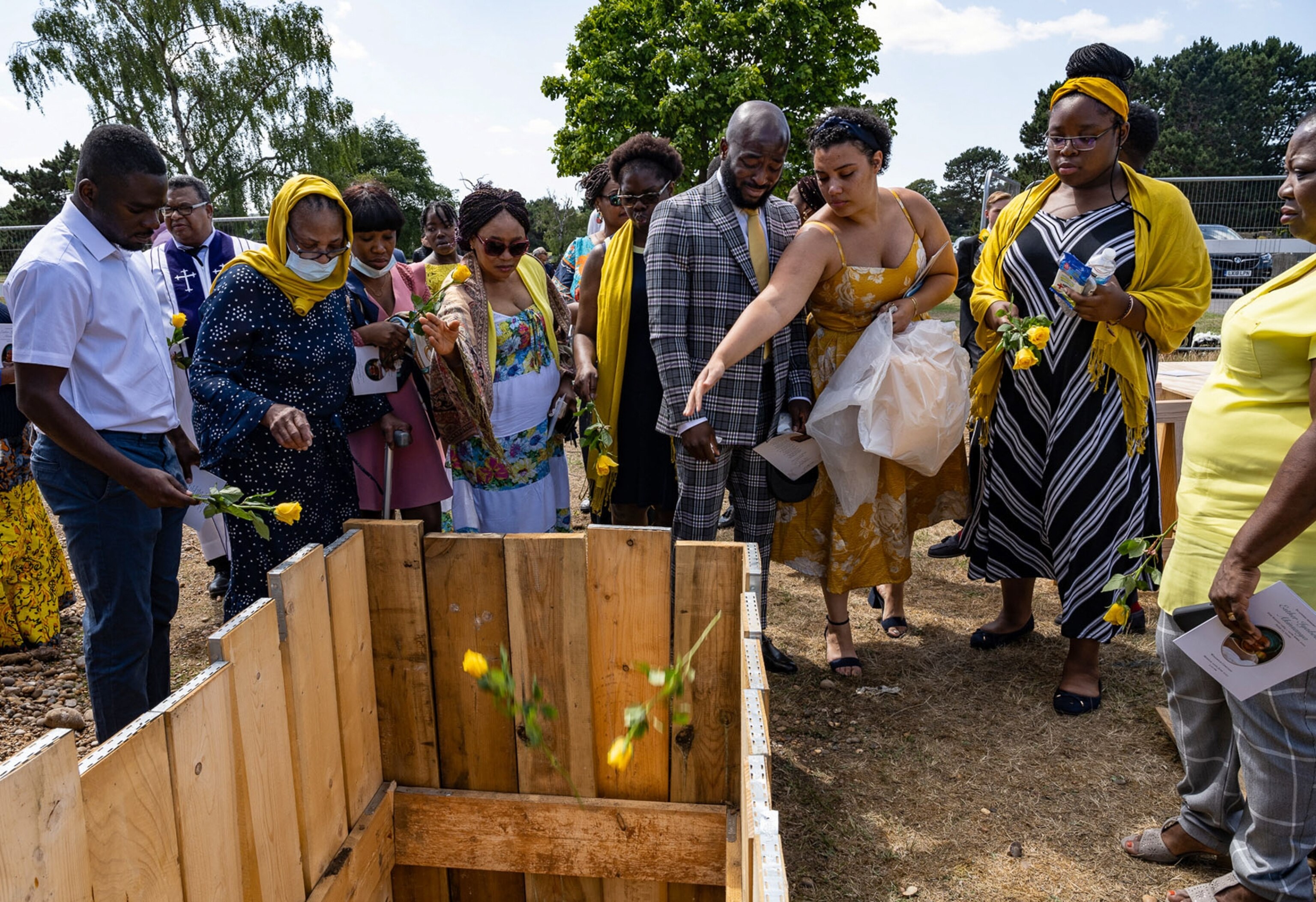
From the dead to the living: Concerned that Britain was sanitizing its coverage of COVID-19, photographer Lynsey Addario thought powerful images would shock a nation into taking its lockdown seriously. Hospitals initially rebuffed her efforts to get inside. Addario began working backward. She covered funerals, chronicling the stories of the fallen—and of the spreading virus—from the surviving family members. Pictured above, nurse Mary Idowu, second from left, joins a small group of loved ones bidding farewell to her younger sister, Esther Iyabode Akinsanya, in this burial service on June 22. Akinsanya, also a dedicated nurse, contracted COVID-19 while working at the Queen Elizabeth Hospital in London. “They wept for Esther, for what they had seen, for the 218 NHS health care workers who died in the pandemic, and for what was still ahead in their fight against coronavirus,” Addario writes for Nat Geo.
In a few words
I’m afraid of what the future will bring, of loved ones dying, or even of myself being in danger. But I take some comfort that ... we are facing this ordeal all together, no one is alone in their house, because we all are.Newsha Tavakolian, Iranian photographer, From: ‘It was like a scary movie.’ Coronavirus has forced Iran to take a hard pause
Did a friend forward this to you?
On Mondays, Debra Adams Simmons covers the latest in history. If you’re not a subscriber, sign up here to also get Victoria Jaggard on science, George Stone on travel, and Rachael Bale on animal and wildlife news.
The last glimpse

Remote learning: Nearly two decades ago in northwestern Australia, these children already were getting their lessons remotely, from a radio broadcast. John Koyers and his family were more than 200 miles from any school, photographer Sam Abell reported in a 1991 National Geographic feature. Here, Abell captures Koyers and his kids playing pool in their combo game room and auto repair shop. Our senior photo archivist, Sara Manco, loves Abell’s imaginative composition. “The graphic nature of this photo is what strikes me,” Manco says, “how the lines and circles work together to create a compelling image, and how the photographer took a crowded place and made space for the people being photographed."